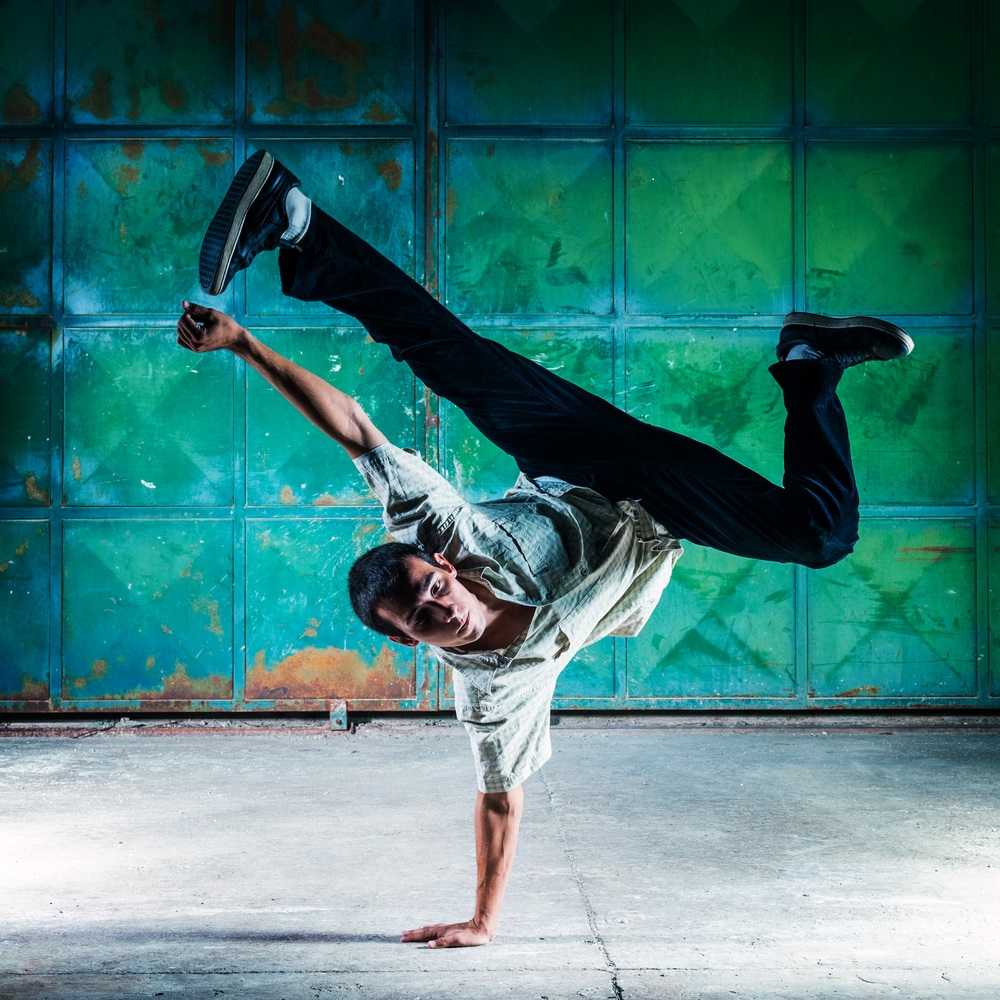History and Evolution of Breakdancing

Breakdancing, a dynamic and expressive dance form, has its roots in the vibrant street culture of the 1970s Bronx, New York. This dance style emerged as a fusion of various influences, including funk music, street culture, and African-American dance traditions.
Origins and Influences
Breakdancing originated in the 1970s in the South Bronx, a neighborhood characterized by poverty and social unrest. This environment fostered a sense of creativity and resilience, leading to the emergence of street culture, including hip hop, graffiti art, DJing, and breakdancing. Funk music, with its infectious rhythms and syncopated beats, provided the musical backdrop for this emerging dance form.
Breakdancing drew heavily from African-American dance traditions, such as the Charleston, the Lindy Hop, and the Jitterbug. These dances emphasized rhythmic footwork, improvisational movements, and a strong sense of rhythm. The early breakdancers incorporated elements from these traditions, blending them with their own unique styles and innovations.
Early Styles and Movements
The early forms of breakdancing were characterized by two distinct styles: “top rock” and “down rock.” Top rock involved intricate footwork patterns and dynamic movements performed on the feet, while down rock focused on acrobatic moves and floor work.
Top rock, often performed to the beat of the music, showcased intricate footwork patterns, body isolations, and creative variations. Down rock, in contrast, involved a variety of acrobatic movements performed on the floor, such as spins, freezes, and power moves.
Evolution and Key Figures
Breakdancing evolved rapidly throughout the 1980s, with the emergence of new styles, techniques, and competitions. Notable figures who shaped the evolution of breakdancing include:
- The Rock Steady Crew: One of the first breakdancing crews, formed in the late 1970s, they popularized the “down rock” style and introduced iconic moves such as the “windmill” and the “headspin.”
- The Furious Five: A breakdancing crew known for their innovative moves and dynamic performances, they helped to popularize breakdancing internationally.
- Kool Herc: A DJ credited with pioneering hip hop culture, he is considered a foundational figure in breakdancing. Herc’s innovative use of turntables and breakbeats provided the rhythmic foundation for the dance form.
Techniques and Styles of Breakdancing

Breakdancing, a dynamic and expressive form of street dance, encompasses a diverse range of techniques and styles, each with its own unique characteristics and aesthetic appeal. These techniques and styles have evolved over decades, influenced by various cultural and artistic influences, creating a rich and multifaceted dance tradition.
Core Breakdancing Moves
The foundation of breakdancing lies in its core moves, which are fundamental techniques that form the basis of more complex routines. These moves can be broadly categorized into four main groups: toprock, footwork, power moves, and freezes.
- Toprock: Toprock refers to the rhythmic and stylish footwork performed while standing upright. It involves a combination of steps, turns, and arm movements, often incorporating elements of other dance styles. Toprock is typically used as an introduction to a breakdancing routine or as a transition between other moves.
- Footwork: Footwork involves intricate and fast-paced foot movements performed on the ground. It often involves rapid transitions between different foot positions, creating complex patterns and rhythms. Footwork is a highly technical aspect of breakdancing, requiring precise coordination and agility.
- Power Moves: Power moves are dynamic and acrobatic techniques that involve using momentum and strength to perform flips, spins, and other gravity-defying movements. These moves require significant physical strength, flexibility, and control. Power moves are often the highlight of a breakdancing routine, showcasing the dancer’s athleticism and creativity.
- Freezes: Freezes are static poses that breakdancers hold for a brief period, often as a transition between moves or to emphasize a particular moment in a routine. Freezes can be simple or complex, depending on the dancer’s skill and creativity. They often involve balancing on one or more body parts, creating visually striking and impressive images.
Breakdancing Styles, Break dancing
Breakdancing has evolved into a diverse range of styles, each with its own unique characteristics, techniques, and aesthetic appeal. Some of the most prominent breakdancing styles include B-boying, B-girling, Popping, and Locking.
- B-boying: B-boying, also known as breaking, is the original and most widely recognized style of breakdancing. It is characterized by its emphasis on footwork, power moves, and freezes. B-boying often involves a combination of these techniques, creating dynamic and complex routines. The aesthetic of B-boying is typically characterized by its raw energy, athleticism, and creativity.
- B-girling: B-girling is the female counterpart to B-boying, incorporating the same core techniques but often with a more graceful and fluid style. B-girling often emphasizes flexibility, control, and artistry, showcasing a unique blend of power and elegance.
- Popping: Popping is a style of breakdancing that involves a series of quick, jerky movements, creating the illusion of “popping” out of different positions. Popping techniques are often combined with other breakdancing moves, adding a layer of dynamism and visual interest to routines.
- Locking: Locking is a style of breakdancing characterized by sharp, angular movements and quick, precise locks. Locking often involves a combination of poses, gestures, and rhythmic movements, creating a visually engaging and energetic style.
Comparison of Breakdancing Styles
| Style | Techniques | Aesthetics |
|—|—|—|
| B-boying | Footwork, power moves, freezes | Raw energy, athleticism, creativity |
| B-girling | Footwork, power moves, freezes | Graceful, fluid, power and elegance |
| Popping | Quick, jerky movements | Dynamic, visually interesting |
| Locking | Sharp, angular movements, locks | Visually engaging, energetic |
| Move Name | Description | Illustration | Video Link |
|---|---|---|---|
| Toprock | Rhythmic and stylish footwork performed while standing upright. | [Illustration of a breakdancer performing toprock, showing a combination of steps, turns, and arm movements.] | [Video link demonstrating toprock techniques.] |
| Footwork | Intricate and fast-paced foot movements performed on the ground. | [Illustration of a breakdancer performing footwork, showing rapid transitions between different foot positions, creating complex patterns and rhythms.] | [Video link demonstrating footwork techniques.] |
| Power Move | Dynamic and acrobatic techniques that involve using momentum and strength to perform flips, spins, and other gravity-defying movements. | [Illustration of a breakdancer performing a power move, showing a flip or spin, demonstrating athleticism and control.] | [Video link demonstrating power move techniques.] |
| Freeze | Static poses that breakdancers hold for a brief period, often as a transition between moves or to emphasize a particular moment in a routine. | [Illustration of a breakdancer performing a freeze, showing a balanced pose, demonstrating visual striking and impressive images.] | [Video link demonstrating freeze techniques.] |
Breakdancing Culture and Community: Break Dancing

Breakdancing, born from the streets and nurtured within urban communities, has become a powerful force in youth culture, shaping identities and fostering a sense of belonging. Beyond the intricate footwork and gravity-defying spins, breakdancing offers a platform for self-expression, creativity, and social connection.
The Role of Breakdancing in Youth Culture and Urban Communities
Breakdancing emerged as a form of self-expression for marginalized youth, particularly in the Bronx borough of New York City. It provided an outlet for creativity and a way to escape the challenges of poverty and social exclusion. Breakdancing crews became a refuge, offering a sense of community and shared purpose. The vibrant energy and athleticism of breakdancing attracted attention, transforming it into a global phenomenon, with its influence felt in diverse urban communities worldwide.
The Significance of Breakdancing Battles and Competitions
Breakdancing battles and competitions play a crucial role in fostering creativity and pushing the boundaries of the art form. These events provide a platform for dancers to showcase their unique styles, innovative moves, and improvisational skills. The competitive spirit encourages dancers to constantly refine their techniques, experiment with new moves, and strive for excellence. Battles often feature elaborate themes and narratives, allowing dancers to express themselves through a combination of movement, music, and storytelling.
The Importance of Crews and Collectives in the Breakdancing Community
Breakdancing crews and collectives are integral to the fabric of the breakdancing community. They provide a sense of belonging, support, and shared identity for dancers. Crews often function as training grounds, where members learn from each other, share knowledge, and develop their skills together. They also serve as a network of support, fostering a sense of camaraderie and encouraging collaboration.
A Hypothetical Breakdancing Event
A hypothetical breakdancing event could be structured around a theme, such as “Urban Legends,” combining elements of storytelling, music, and dance. The event could feature three categories:
- Solo Battles: Dancers would compete head-to-head, showcasing their individual skills and creativity.
- Crew Battles: Crews would compete against each other, showcasing synchronized routines and collaborative choreography.
- Cypher: A freestyle session where dancers can express themselves individually and collaboratively, creating an organic and spontaneous performance.
The judging criteria could include:
- Technical Skill: Judges would assess the dancers’ mastery of breakdancing techniques, including footwork, power moves, and freezes.
- Creativity: Judges would assess the dancers’ originality and ability to create unique and captivating moves.
- Musicality: Judges would assess the dancers’ ability to connect their movements to the music and create a cohesive performance.
- Showmanship: Judges would assess the dancers’ stage presence, charisma, and ability to engage the audience.
Audience engagement could be enhanced through interactive elements, such as:
- Live DJ: A DJ could create a dynamic and engaging atmosphere, selecting music that complements the dancers’ styles.
- Interactive Voting: The audience could participate in the voting process, contributing to the overall energy and excitement of the event.
- Workshops: The event could feature workshops led by renowned breakdancers, offering opportunities for audience members to learn basic techniques and connect with the community.
Break dancing – Breakdancing, a dance form that requires agility and control, shares a surprising connection with skydiving. While one involves controlled movements on the ground, the other involves freefall from the sky. Just as a breakdancer must navigate the unpredictable forces of gravity, skydivers face similar challenges, especially when encountering skydiving accident dust devils.
These swirling columns of air can disrupt a skydiver’s descent, just like a sudden spin can throw off a breakdancer’s rhythm. Both require a blend of skill, awareness, and adaptability to navigate the unexpected.
Breakdancing, a dance form that embodies energy and athleticism, often involves close contact and shared spaces. The recent nassau county ban masks has sparked debate, especially among those who enjoy breakdancing. While the ban aims to promote normalcy, it raises concerns about health and safety within the breakdancing community, where masks have become a symbol of responsibility and respect for others.
